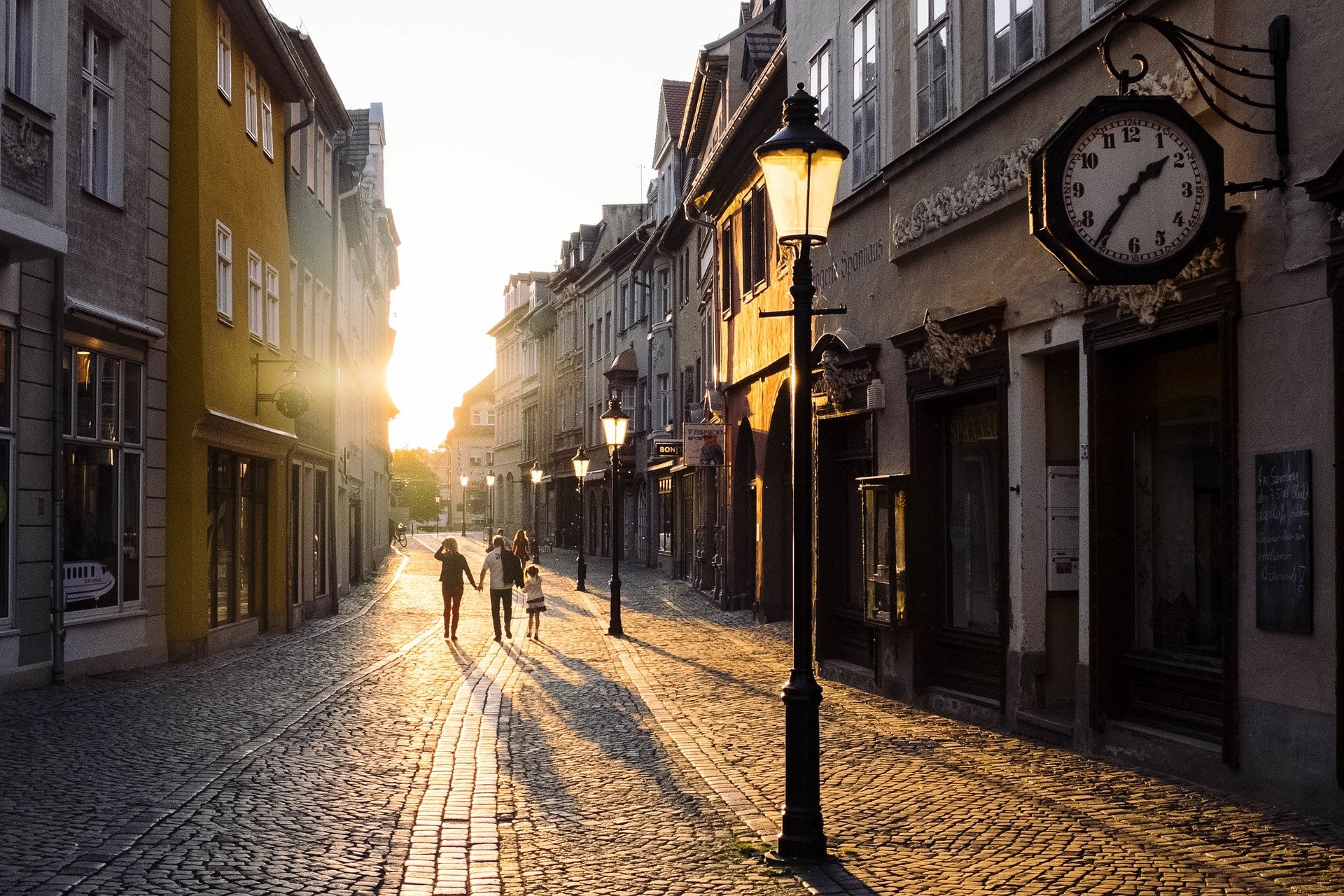Across the globe there is growing interest in creating places where people’s day to day needs can be met within a distance short enough to walk or cycle. If people become more physically active, their mental and physical health improves. Traffic decreases and the quality of the air we all breathe gets better. Local services are boosted so employment opportunities close to home increase. People see their neighbours more and begin to feel more a part of their community.
The phrase ’20-minute neighbourhoods’, which are also sometimes referred to as ’15-minute cities’, is starting to be bandied about quite freely.
What are 20-minute neighbourhoods?
The objective is to plan neighbourhoods that have a diverse range of services and amenities so that residents can meet their daily needs within an enjoyable 20-minute return walk or short cycle ride. This is the distance that most people are happy to cover for daily errands. It equates to around a mile on foot and would take about seven minutes on a bike. Of course, some people may find it too challenging to walk. This means it is important that spatial planning needs to align with transport infrastructure planning, so that using public transport to places you need to go locally is easily achievable.
What does an ideal 20-minute neighbourhood contain?
The general consensus seems to be that the following seven elements need to be included:
- Food shops
- Schools (from nursery to sixth form)
- Health services (to include doctor, dentist, and pharmacy)
- Employment opportunities
- Green spaces
- Entertainment
- Financial services
Thriving spaces without using a car
As well as good public transport services, whether it be buses, trains or trams, walking and cycling infrastructure also needs provision, with roads geared towards less traffic, reduced speed and limited parking.
Inclusive housing
To be genuinely inclusive, housing needs to be more than affordable, with a healthy proportion of social housing. It needs to be designed to suit different life stages too, from starter houses to family homes to retirement living.
Impact of COVID-19
The pandemic has had a big impact on discussion around 20-minute neighbourhoods. With so many of us forced of necessity to spend time in our neighbourhoods, we have looked at where we live with fresh eyes.
We discovered areas of interest or green spaces that we may have just ignored before as we sped past in our cars on the way to work or an out-of-town retail park. Despite the return of the high street, large number of local retailers are still doing a roaring trade, finding a whole new market for their wares, right on their doorstep.
The long-term impact of this on the built environment across the country will be fascinating to witness. Contact us to see how we can assist with your next commercial project.








